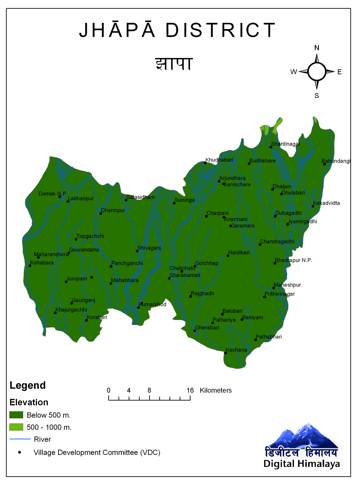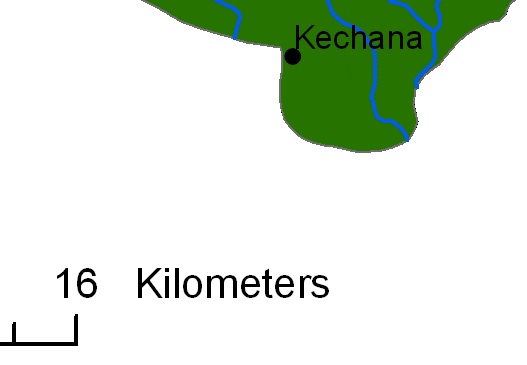This is Mount Everest (map), a topic way to obvious for the Twelve Mile Circle to consider. What could I add? Everyone knows about it, every map of the area shows it, and resources galore focus on its magnificence. Its national attitudinal opposite, however — the lowest elevation in Nepal — is a different story and a far more elusive quarry.

Who cares about the lowest elevation in Nepal? Well I do, but that’s not a sentiment shared by many others apparently. Oh, it’s mentioned all over the Intertubes but most always just like this:
“The highest point is Mt. Everest (8848m) in the north and the lowest point (70 meters above sea level) is located at Kechana Kalan of Jhapa District.”
It’s an aside, a throwaway statement used to counterbalance the great weight of Mt. Everest, receiving little or no thought or original research. This statement, indeed this exact word-for-word recitation, replicates from website to website without care or concern. Doesn’t anyone believe in fact checking anymore, never mind using citations or avoiding the appearance of plagiarism?
I’ll give kudos to Nepal Monitor – the National Online Journal [no longer available on the Internet, unfortunately]. They buck the trend by setting the lowpoint at 67 meters. At least they seem to be using a different possibly more definitive, source. It doesn’t help me find the exact spot but it does give me some confidence of the general area of Nepal where it probably appears. I’ll withhold any kudos for the usually reliable CIA World Factbook though. They call it Kanchan Kalan, sending me on quite the wild goose chase for much of the morning.
General Layout
Let’s consider the topography of Nepal for a moment. Everyone knows about the Himalayas to the north. That’s a given. However, some readers may be a little surprised at the amazing drop in elevation as one moves south. A flatland runs along Nepal’s southern tier, straight down from Mount Everest.

This is the Terai, a fertile alluvial plain of the Ganges River watershed that extends anywhere from 25 to 50 kilometers into southern Nepal. One generally conjures up images of trekkers and Sherpas when thinking of Nepal, but the Terai has more in common with Bangladesh: subtropical marshlands, grasslands and woodlands with exotic wildlife such as tigers, rhinoceroses and gharials (that’s a kind of a crocodile; I took a picture of one at a zoo a few years ago if you want to see what one looks like)
The Jhapa District
Let’s take a closer look at the Jhapa District at the southeastern corner of Nepal, and see if we can identify the elusive Kechana Kalan.

I find lots of fascinating websites as I research these posts. In this case the map comes from an interactive tool available at Digital Himalaya, “A project to develop digital collection, storage, and distribution strategies for multimedia anthropological information from the Himalayan region.” I had a lot of fun generating all kinds of maps of Nepal as I searched through the options.
Another useful resource was a site called “Revolution in South Asia” which was the only place that I could find a really detailed map of Nepal online. I began to narrow down the location of Kechana Kalan by cross-referencing these resources and by examining the Jhapa District.

I found a town called Kechana by looking at a detail from the Jhapa District from the same map. Is this the fabled Kechana Kalan? Honestly, I don’t know. It does have a number of possibilities going for it though, including its name and approximate location. Maybe I’m being too literal, too. Maybe the lowpoint is an area rather than a distinct “spot” given the relative flatness of the surrounding terrain.
Much like the trekkers who nearly make it to the top of Mt. Everest but have to turn back, I have not been able to completely determine the exact longitude/latitude of Nepal’s lowpoint and I must give up the chase for now. I think I got close but I’m missing the last piece of evidence that would nail it down. Maybe next blogging season.
Hopefully someday a Nepalese geographer will stop by to solve this mystery.

Leave a Reply